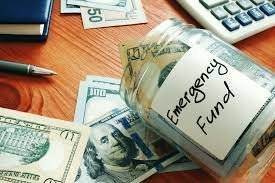In today’s uncertain world, having an emergency fund is more important than ever. Whether it’s a sudden medical expense, job loss, or unexpected car repair, an emergency fund acts as a financial safety net. However, starting from zero can feel overwhelming. The good news is, with the right strategy and discipline, anyone can build an emergency fund from scratch.
An emergency fund is a dedicated amount of money set aside to cover unexpected expenses. It helps you avoid taking loans, using credit cards, or borrowing money during tough times. Financial experts recommend having at least 3-6 months’ worth of living expenses in your emergency fund.
Life is unpredictable, and emergencies can happen anytime. Some common reasons to have an emergency fund include:
- Job loss
- Medical emergencies
- Home or car repairs
- Sudden travel needs
- Unexpected bills
Having an emergency fund ensures that you’re financially secure without relying on debt.
Start by calculating your monthly expenses like rent, groceries, bills, and transport. Multiply this amount by three to six months to set your target amount.
Example: If your monthly expenses are $1000, your emergency fund goal should be between $3000 and $6000.
Keep your emergency fund in a separate high-yield savings account to avoid spending it accidentally. Choose a bank that offers high interest rates and no monthly fees.
Trending Keywords: Best savings accounts 2025, High-yield savings accounts, Online banking
Even if you can only save $10 or $20 per week, consistency is key. Small amounts add up over time. Automate your savings by setting up a monthly transfer from your checking account to your emergency fund.
Identify unnecessary expenses like eating out, subscriptions, or impulse shopping. Use that money to boost your savings.
Quick Tip: Use budgeting apps like Mint or YNAB to track your expenses.
If saving from your current income feels difficult, look for side hustles or freelancing opportunities. Platforms like Fiverr and Upwork offer great ways to earn extra income.
Trending Keywords: Side hustles 2025, Freelancing for beginners, Passive income ideas
Any unexpected money like tax refunds, bonuses, or gift cash should go straight into your emergency fund.
Trending Keywords: Smart saving tips, How to grow savings, Emergency fund hacks
On average, it takes 6-12 months to build an emergency fund depending on your savings rate. The key is to stay patient and consistent.
| Monthly Savings | Time to Reach $3000 |
|---|---|
| $100 | 30 months |
| $200 | 15 months |
| $300 | 10 months |
- High-Yield Savings Accounts
- Money Market Accounts
- Fixed Deposit Accounts (for long-term savings)
- Using the fund for non-emergency expenses
- Not setting a savings goal
- Keeping the money in a regular checking account
- Stopping contributions once you reach your goal
Building an emergency fund from zero may seem challenging, but it’s one of the best steps toward financial stability. Start small, stay consistent, and make saving a habit. With the right mindset and strategies, you’ll have your safety net ready in no time.

